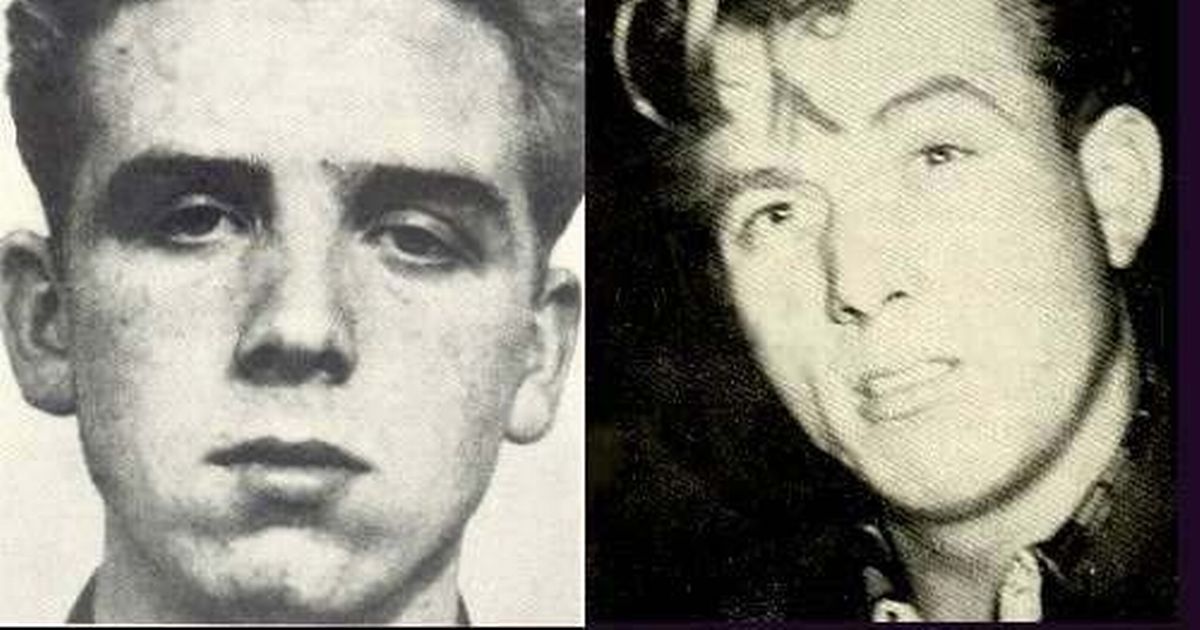The murder of Beatrice Rimmer sent shockwaves through the city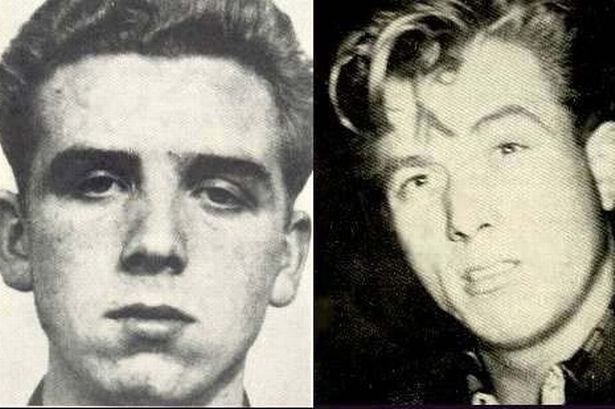 Alfred Burns and Edward Devlin – hanged side by side at Walton Gaol for the murder of Beatrice Alice Rimmer in Wavertree(Image: handout Liverpool Echo)
Alfred Burns and Edward Devlin – hanged side by side at Walton Gaol for the murder of Beatrice Alice Rimmer in Wavertree(Image: handout Liverpool Echo)
In August 1951, a widow named Beatrice Alice Rimmer was killed in her home in Wavertree, but some believe the wrong men were punished for the horrific crime.
Edward Devlin, 20, and Alfred Burns, 21, were hanged together in a rare double execution at the prison on April 25, 1952.
Earlier this month, the bodies of the two young men were exhumed from their grave in Walton Prison.
The convictions of Devlin and Burns have been the subject of controversy. They were based on the testimony of supposed accomplices, rather than forensic evidence.
Here, we look back at the case in detail.
Two weapons, two suspects
It was the evening of August 19, 1951, when Beatrice Alice Rimmer was spotted returning to her house on Cranborne Road, opposite Sefton General Hospital, on Smithdown Road.
Beatrice had lived alone at her house since the death of her husband in 1950.
She had been visiting her son, 24-year-old Thomas Rimmer, who lived on Madryn Street in Dingle. He had given his mum a bunch of flowers before she left for home.
The following day, Thomas visited Beatrice.
Arriving at 7 Cranborne Road, he was alarmed to find that her milk remained untouched outside her front door and the morning paper was still sticking out of the letterbox.
Entering the home, Thomas found his mum lying in a pool of her own blood, still holding the bunch of flowers he had given her the evening before.
Cranborne Road had long been seen as the upper class district of Liverpool, but three murders in the space of two years had changed its reputation and the area became known as the Murder Mile.
In fact, the infamous Cameo murders happened just round the corner from the Rimmer home in 1949.
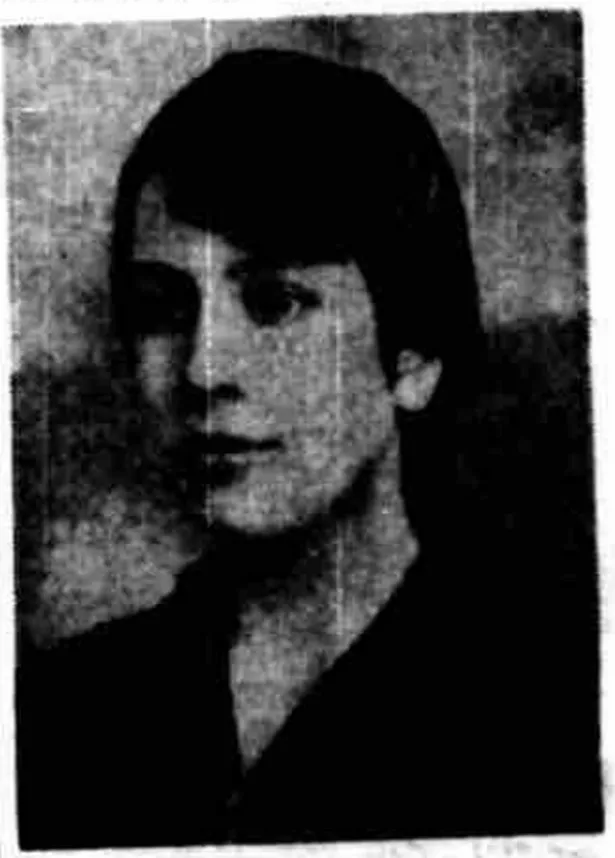 A picture of Beatrice Alice Rimmer as a young woman(Image: British Newspaper Archive)
A picture of Beatrice Alice Rimmer as a young woman(Image: British Newspaper Archive)
Police detectives arriving at the scene quickly decided that the death had been part of a home invasion or burglary. It was believed that a large sum of money had been left in the home and the criminals had tried to force Beatrice to disclose its whereabouts.
A person, or persons, had entered through the kitchen window, before attacking the 51-year-old.
Later on, a Home Office post-mortem revealed that the injuries Beatrice had suffered were those inflicted by torturers attempting to extract information from her regarding the whereabouts of her money.
The fact that two weapons had been used suggested to police that two assailants had entered Beatrice’s home and carried out the murder.
The hunt was on for the killers.
Trusting in the word of criminals
The Cranborne Road murder, as it came to be known, led police to interview 200 to 300 people within the first month of their inquiry.
Detective Superintendent Hector Taylor, took charge of the investigation, and the first suspect was Beatrice’s son, Thomas.
Both Taylor and Detective Chief Inspector Jimmy Morris, suspected that Beatrice’s only son, a former police officer with Liverpool City Police, was likely to have been involved.
Thomas had discovered his mother’s body at 7.15pm on August 20, and police were keen to know why he had decided to visit his mother so quickly after the two had met the day before.
The officers were also surprised to find that the broken window they initially discovered in the kitchen, which was first thought to be the point of access for the home invaders, had not been used at all.
Thomas Rimmer seemed a likely suspect, but when Taylor and Morris informed Detective Chief Superintendent Balmer of their findings they were disappointed.
Balmer told the pair to discount Thomas Rimmer as he had re-applied to join the city force.
Instead of sticking with his officers and the evidence they had gathered, Balmer turned to his network of informants.
It was mid-September when a prisoner by the name of George McLaughlin spoke to police claiming to have known the murderers.
McLaughlin was an army deserter and former housebreaker who had a long criminal history and was being held in his cell at Walton Gaol.
What he had to say would prove crucial to the outcome of the case.
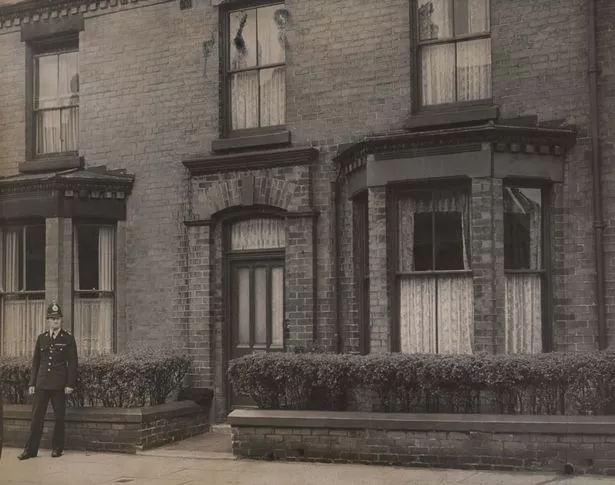 The home of Beatrice Alice Rimmer in Cranborne Road, Wavertree, where she was found murdered on August 20, 1951 – she had been battered to death the previous evening.
The home of Beatrice Alice Rimmer in Cranborne Road, Wavertree, where she was found murdered on August 20, 1951 – she had been battered to death the previous evening.
The 19-year-old told Balmer that he had met a man who went by the name of Ginger in Manchester while eating at the Continental all night cafe. At the cafe, the two had agreed to rob a home in Wavertree. He was later introduced to second man who was also due to take part in the burglary.
The man had mentioned that he was more than willing to use violence to get what he wanted.
Balmer was so taken by this story, he enlisted his journalist friends in the Liverpool Press Club to publish news of a police manhunt for Ginger accompanied by a full description and his known haunts.
Ginger, whose real full name was unknown, was never found.
McLoughlin told police that there was also a fourth party involved in the plan – a waitress by the name of June Bury.
Bury was to be the bait in this robbery. She would knock on the door to distract Beatrice, allowing the men to enter through the kitchen before ransacking 7 Cranborne Road.
McLaughlin had been arrested on August 17, two days before the robbery and it had gone ahead in his absence.
The prisoner’s auntie lived at 109 Cranborne Road, and police decided that McLaughlin may have gleaned information from her about Beatrice, her money, her valuables, and home.
Detectives were able to quickly track down the waitress, Bury.
She was an easy person to find, since like McLoughlin she frequented the city’s all-night cafes. She was already wanted for skipping police bail following a robbery at a store in Berry Street.
The waitress was quick to give up her accomplices.
She named them as 21-year-old Alfred Burns and 22-year-old Edward Devlin, two prolific burglars from Manchester.
 Alfred Burns (left) and Edward Devlin (right), were both accused of the murder or Beatrice(Image: ECHO)
Alfred Burns (left) and Edward Devlin (right), were both accused of the murder or Beatrice(Image: ECHO)
Both men appeared to fit the profile, one having absconded from borstal the other have been bailed on a robbery charge.
The men were arrested and brought to Liverpool where they were questioned by detectives.
Devlin claimed to have an alibi, the 22-year-old said he was breaking into a warehouse at the time of the murder while Burns offered no alibi.
Both men vehemently denied any involvement in the murder.
Subsequently McLaughlin, still assisting police, picked out both men in an identification parade. However, the third man involved in the robbery was unable to do the same.
Furthermore, forensic tests on blood stains found on the men’s clothing proved inconclusive, while no fingerprints or murder weapons were ever discovered.
Finally, there was evidence that the murder did not fit the pattern of a robbery, mainly because nothing had been stolen from the Cranborne Road home.
This meant one thing, and one thing only; that any kind of case to bring against the pair was based on eyewitness accounts and circumstantial evidence.
Trial, sentence, and aftermath
The trial opened on the February 11, 1952.
Proceedings began with an bombshell when Burns’s counsel, Sir Noel Goldie QC, surprised the court by revealing that both men had an alibi. They had spent the night of August 19 robbing a Manchester clothing warehouse owned by Sun Blinds Ltd.
The men were able to produce several witnesses to this fact, including the warehouse owner.
A man convicted of the robbery even swore on oath that the pair had accompanied him on the job.
But when Burns and Devlin came to recount their version of the robbery they were unconvincing, providing no more details than the ones already published in the newspapers.
The prosecution then claimed that the Sun Blinds robbery had actually happened 24 hours before the Cranborne Road murder, rendering both alibis useless.
Following a 10 day trial, the jury found the pair guilty of murder, having deliberated for only 75 minutes.
Both men were sentenced to death, with Devlin and Burns expected to be hanged at Walton.
A friend of Bury, Elizabeth Rooke, claimed that the waitress’s testimony was only delivered because she was covering up the real killer, her lover Austin O’Toole.
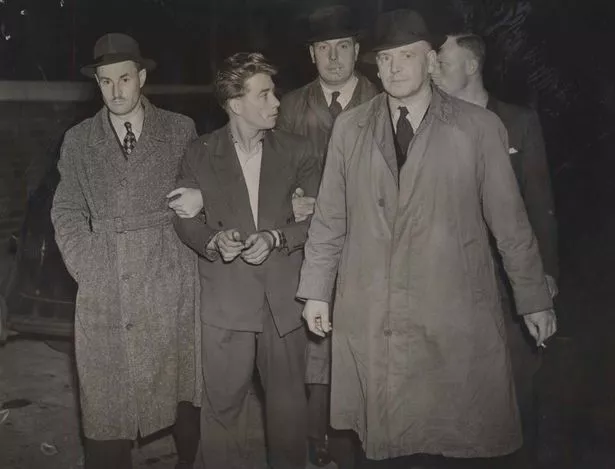 Edward Devlin with detectives after his arrest for the murder of Beatrice Alice Rimmer – Alfred Burns was also charged with her murder
Edward Devlin with detectives after his arrest for the murder of Beatrice Alice Rimmer – Alfred Burns was also charged with her murder
However, the prosecution claimed that O’Toole had been in jail at the time of the killing.
Bury also swore that her original statement was true, knowing that she faced a lengthy spell of imprisonment for perjury if she lied on the stand.
At the Court of Criminal Appeal, Lord Goddard refused to hear new evidence that Bury had told three girls another boyfriend of hers was responsible for the murder.
The appeal was dismissed but, with the publicity and controversy surrounding the case, Home Secretary Sir David Maxwell Fyfe ordered an inquiry into the investigation, which was held at the Municipal Annexe, postponing the execution for one week.
But the report concluded there were “no reasonable grounds to suggest that a miscarriage of justice had taken place” and the executions were given the go ahead.
Devlin and Burns were hanged side by side at Walton prison on April 25, 1952.
Exhumation of the men’s bodies
Days after the execution, press reports claimed that one of the men had made a confession shortly before his death. However, their relatives continued to insist the men were innocent.
To this day, there are still those who believe that both men were wrongly executed, and that neither was involved in the murder.
Merseyside author George Skelly, who has written a book on the case called ‘Murderers or Martyrs’, believes the men were innocent.
He told the ECHO he went to Walton Prison earlier this month to “pay his respects” to Devlin and Burns as their bodies were exhumed. He claims the bodies were exhumed to remove the “stigma of a prison grave”.
Mr Skelly has been trying to clear the men’s names for many years, and hopes that one day, Devlin and Burns will be posthumously pardoned.
In 2011, he tried and failed to get the Criminal Cases Review Commission to consider their case, but is planning to make a second attempt.
Mr Skelly has made comparisons between this case and the aforementioned Cameo murders.
The Cameo cinema murders rocked the city and led to the biggest manhunt the city had ever seen. Leonard Thomas, 44, manager of the Wavertree cinema, and his assistant, John Catterall, 30, were killed during a bungled burglary in March of that year.
The murders and investigations placed a lasting stain on the reputation of British justice when it was revealed an innocent man was executed.
In October 2003, the family of Liverpool man George Kelly, who was wrongly hanged for the crime, received an official apology from the state.
The exhumation reportedly took place at the request of one of the men’s families. According to the Ministry of Justice, the bodies “will undergo DNA testing before being returned to their families for private burials or cremation”.
The death penalty was abolished in 1965, but following the abolition, the then-Home Secretary said he would “consider sympathetically” any request to remove the remains of any executed prisoner for private burial.
